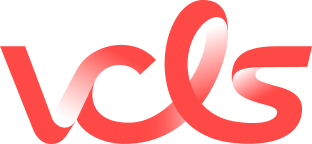Navigating the New FDA Draft Guidance on Platform Technologies: An Overview for Life Sciences Companies

Published on: June 19th, 2024
As regulatory landscapes evolve, staying ahead of new guidelines is crucial for life sciences companies. On May 29, 2024, the FDA issued the draft Platform Technology Designation Program for Drug Development Guidance for Industry, which was established by the PREVENT Pandemics Act. This draft guidance outlines eligibility factors for receiving a platform technology designation which impacts a broad spectrum of medical products, including drugs, biologics, and medical devices.
Electronic/written comments on the draft guidance are due by July 29, 2024. You can submit electronically including attachments to https://www.regulations.gov Written comments with confidential information that you do not want to make public can be submitted as part of a written/paper submission to Dockets Management Staff (HFA-305), Food and Drug Administration, 5630 Fishers Lane, Rm. 1061, Rockville, MD 20852.
The draft guidance outlines and defines FDA’s platform designation and eligibility; it advises on content and timing of the platform designation submission and provides FDA’s review timelines. Here, we summarize the key elements of this guidance.
Understanding Platform Technologies
As defined in the draft guidance, a designated platform technology is a platform technology that meets the following eligibility factors for granting the designation: (1) it is incorporated in, or used by, a drug approved under section 505 of the FD&C Act, or a biological product licensed under section 351 of the PHS Act; (2) preliminary evidence demonstrates that the platform technology has the potential to be incorporated in, or used by, more than one drug without an adverse effect on quality, manufacturing, or safety; and (3) data or information indicates that incorporation or use of the platform technology has a reasonable likelihood to bring significant efficiencies to the drug development or manufacturing process and to the review process.
Examples include:
-
mRNA-Based Vaccines: Common mRNA platforms for vaccines against diseases like COVID-19, influenza, and Zika virus.
-
Gene Therapy Vectors: Single vector platforms for gene therapies targeting disorders such as hemophilia and spinal muscular atrophy.
-
Drug Delivery Systems: Platforms like lipid nanoparticles for delivering various therapeutics.
-
Monoclonal Antibodies: Frameworks for engineering antibodies to treat conditions such as cancer and autoimmune diseases.
Overview of the submission content
- Description of the platform technology and how it meets the definition and eligibility for a platform designation.
- Identification of an approved application (NDA, BLA, or ANDA) where the technology was incorporated.
- Identification of the shared structural element between drug products and how these elements facilitate the use of the platform technology.
- Justification and scientific rationale for the use of a platform technology across multiple products without affecting safety, quality, or manufacturing.
- Risk assessment to evaluate how much prior information should be leveraged in support of the subsequent proposed product that is the subject of a marketing application and/or an IND.
- Justification on how the platform technology would improve the efficiency of the drug development or manufacturing process and to the review process for the application.
Benefits/Implications for Life Sciences Companies
The new FDA guidance presents both opportunities and challenges for life sciences companies. Key considerations include:
-
Strategic Planning: Integrating the new draft guidance into strategic planning to identify opportunities where platform technologies offer regulatory advantages.
-
Data Utilization: Leveraging data from previous approvals, such as batch stability to support shelf-life extrapolation and non-clinical safety data to bypass product-specific assessment for specific designated endpoints.
-
Proactive Engagement: Engaging in early interactions with FDA to discuss the use of the platform and information related to safety, purity, potency, and quality. Receiving timely advice from the Agency by having additional interactions/meetings on the platform technology as part of the program.
-
Inspection experience: Considering previous inspectional findings by FDA for subsequent marketing applications related to the manufacture of a drug that incorporates or uses the designated platform technology.
Conclusion
The FDA’s new guidance on platform technologies represents a significant step forward in fostering innovation while maintaining rigorous safety and efficacy standards. For life sciences companies, understanding and adapting to these changes will be crucial for continued success.

Questions? Get the answer by our expert team
No two product developments are the same, talk to our experts about your development challenges and we will provide your actional recommendations.

